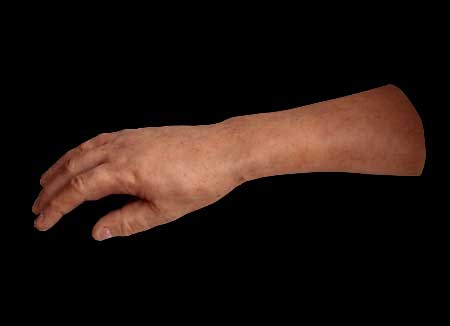Robot headgear
The playground robot headgear customized for the customer is placed on a simple manual inner mold, and the mouth and eye opening and closing are being tested
2020/12/23 9:46:47
Silicone products are relatively environmentally friendly products, but like other products, they still need to be certified for environmental protection and safety. For example, silicone products such as gutta-percha, silicone baby bib and kitchen utensils, what certification qualifications do these silicone products need to pass if they want to enter the market or export to Europe and America?

1. PAHs certification
Polycyclic aromatic hydrocarbons are mainly detected. Polycyclic aromatic hydrocarbons (PAHs) are volatile hydrocarbons produced by incomplete combustion of organic compounds such as coal, petroleum, wood, tobacco, organic polymer compounds, etc. They are important environmental and food pollutants. Up to now, more than 200 kinds of PAHs have been found, and quite a few of them are carcinogenic, such as benzoα pyrene and benzoα anthracene. PAHs are widely distributed in the environment and can be found in every corner of our life. Polycyclic aromatic hydrocarbons may be produced in any place where organic matters are processed, discarded, burned or used.
2. REACH certification
REACH covers a much wider range. Now it has increased to 168 tests, which is the abbreviation of Regulation Concerning the Registration, Evaluation, Authorization and Restriction of Chemicals, and is a chemical supervision system established by the European Union and implemented from June 1, 2007. In fact, it will affect the products and manufacturing processes of almost all industries, from mining to textile and garment, light industry, electromechanical, etc. This is a legal proposal concerning the production, trade and use safety of chemicals, which aims at protecting human health and environmental safety, maintaining and improving the competitiveness of the EU chemical industry, as well as the innovative ability of developing non-toxic and harmless compounds, preventing market division, increasing the transparency of chemical use, promoting non-animal experiments and pursuing sustainable social development, etc. REACH established the idea that society should not introduce new materials, products or technologies if their potential hazards are unknown.
3. RoHS certification
This directive was born in January 2003, and the European Parliament and the Council of the European Union issued the Directive on Restricting the Use of Certain Hazardous Substances in Electronic and Electrical Equipment (Directive 2002/95/EC), which is the first time RoHS met with the world. In 2005, the European Union supplemented 2002/95/EC in the form of 2005/618/EC, which clearly defined the limit values of six hazardous substances. ROHS report is an environmental report, which mainly detects six heavy metals: lead (Pb), cadmium (Cd), mercury (Hg), hexavalent chromium (Cr(VI)), polybrominated biphenyls (PBBs) and polybrominated diphenyl ethers (PBDEs). RoHS directive lists six harmful substances, including lead Pb, cadmium Cd, mercury Hg, hexavalent chromium Cr6+, polybrominated diphenyl ether PBDE and polybrominated diphenyl PBB. The allowable contents of lead (Pb), mercury (Hg), hexavalent chromium (Cr6+), polybrominated biphenyls (PBB) and polybrominated diphenyl ethers (PBDE) in RoHS Directive are 0.1%(1000ppm), and cadmium (cd) is 0.01%(100ppm), which is the legal basis for determining whether products meet RoHS Directive. RoHS was officially implemented in the European Union on July 1, 2006. In the future, electrical and electronic products using or containing heavy metals, polybrominated diphenyl ether PBDE, polybrominated diphenyl PBB and other flame retardants will not be allowed to enter the EU market.
4. FDA/LFGB certification
FDA/LFGB tests for non-food drugs mainly include food contact materials, FDA is the food certification report of the United States, LFGB is the food certification report of the European Union, and FDA/LFGB are two completely different standards. FDA: It is one of the executive agencies established by the US government in the Department of Health and Human Services (DHHS) and the Ministry of Public Health (PHS). As a scientific management organization, FDA is responsible for ensuring the safety of food, cosmetics, drugs, biological agents, medical equipment and radiation products produced or imported in the United States. It is one of the earliest federal agencies whose main function is to protect consumers. This institution is closely related to the life of every American citizen. Internationally, FDA is recognized as one of the food and drug management agencies in the world. Many other countries seek and accept the help of FDA to promote and monitor the safety of their own products. The Food and Drug Administration (FDA) is in charge of: supervision and inspection of food, drugs (including veterinary drugs), medical devices, food additives, cosmetics, animal food and drugs, wine drinks with alcohol content less than 7%, and electronic products; Ionic and non-ionic radiation produced during the use or consumption of products affects the testing, inspection and certification of human health and safety items. According to the regulations, the above-mentioned products can only be sold in the market after being tested and proved to be safe by FDA. FDA has the right to inspect manufacturers and prosecute offenders.

The playground robot headgear customized for the customer is placed on a simple manual inner mold, and the mouth and eye opening and closing are being tested

Medical aids customized by a German medical device company

Originally customized by Australian customers

Masks of middle-aged People in Europe and America are very popular

European and American young people mask, popular young people mask, popular

He is an old farmer in Europe and America, honest, authentic and friendly

Masks for young people in Europe and America, welcomed by customers

The best-selling style in Europe and America it is well received by users

European and American best-selling style, deeply loved by users